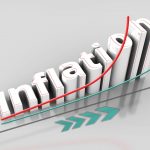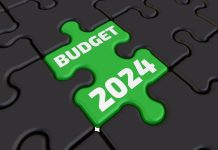
The inflation rate for July 2020 underlined the reason why RBI paused its rate cut cycle. Inflation rate as measured by CPI reached 6.9 percent (YoY) in July’20, breaching the upper band of 6 percent, under the inflation targeting framework. The headline inflation rate was driven mainly by the rising food prices. For instance, food and beverages accounts for nearly 45 percent of the CPI. Thus, the movement of food prices determines the overall movement of inflation. And, in July ’20 food price inched to 9.6 percent. Though rabi crop harvest in the country was quite encouraging, the supply-side disruptions caused by lockdown fueled the price rise. Within food, highest increase was registered by vegetables at 11.29 percent in July ’20, compared to 3.9 percent in June ’20.
Central Bank expects inflation rate to remain at elevated levels in Q2FY21. The rising inflation rate in the country raises the question on whether the economy would be pushed to a stagflation path. Stagflation occurs when the economy is experiencing simultaneous increase in inflation and stagnation of output. IMF estimates the Indian economy to contract by 4.5 percent in CY20. And, in FY20, Indian economy registered the lowest GDP growth rate of 4.1 percent, lowest in the last 11 years. The slowdown in the domestic economy got further accentuated with negative impact of Covid-19. In such a scenario, a rising inflation rate could prove costly to the economy. However, it is too early to say that the Indian economy is facing the issue of stagflation. For instance, WPI that measures the prices at the wholesale level has been in the negative territory for the last four months. In July’20, WPI was at -0.58 percent. Thus, it could be said that the economy is facing inflationary pressure at the retail level, and deflationary pressure at the wholesale level. The disconnect could be attributed to the supply disruption caused by lockdown due to Covid-19. However, core inflation (inflation excluding food and fuel) inching upwards is indeed worrying, considering the present scenario.
The growth-inflation conundrum is getting more prominent. RBI is facing the dilemma on whether to focus on growth or to ensure price stability in the economy. The Central Bank would be having tough run in the coming quarters, if the inflation rate doesn’t slip back to the comfortable level. The Central Bank is legally bound to maintain the inflation rate at 4 percent, +/- 2 percent. And, the present developments raise the question on whether inflation- targeting is best framework for RBI.









